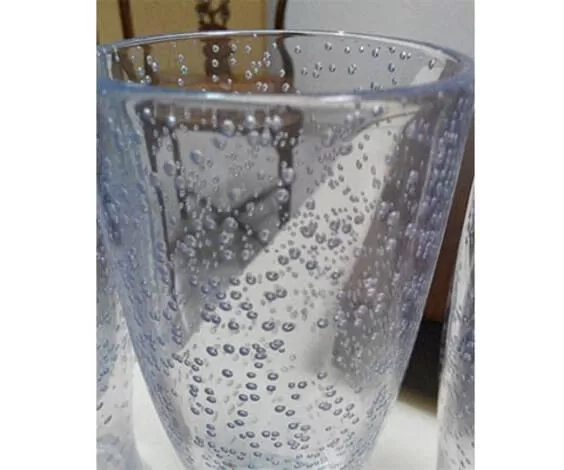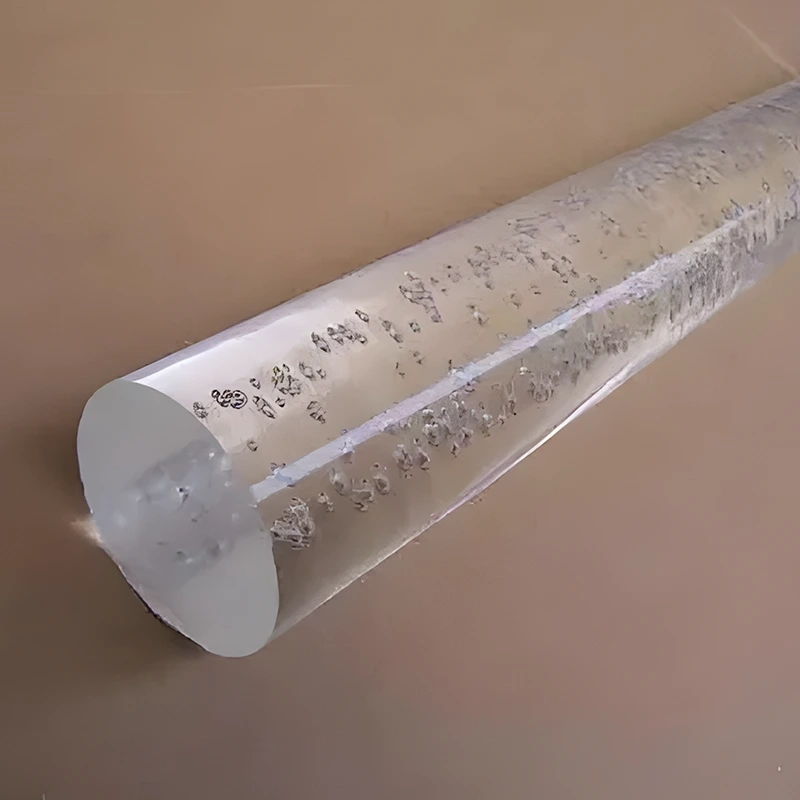What Are Bubbles in Injection Molded Products?
Bubbles happen when gases get stuck inside the mold cavity as the hot plastic flows in. If these gases don’t escape properly, they stay trapped, creating bubbles or leaving empty spots where the mold isn’t fully filled. This flaw weakens the product’s strength and ruins its look. For technicians working on injection molding, fixing bubble problems—especially in clear parts—is a tough job. It often takes more than just changing the speed or heat settings.

Methods to Distinguish Between Bubbles and Vacuum Voids
Bubbles and vacuum voids aren’t the same. Vacuum voids show up because of uneven cooling and shrinking after the molding is done. This usually happens due to walls of different thicknesses. These voids have no air inside and look like internal dents. On the other hand, bubbles often form at weld lines or near the end of filling. This is because too much gas in the mold doesn’t get released. It’s more common in bigger items. You’ll notice bubbles right after taking the part out of the mold, while vacuum voids might appear only after it cools down.
Causes of Bubbles in Plastic Products and Solutions
Excessive Air Incorporation During the Screw Plasticizing Process
How Air Gets Trapped During Plasticizing
When the material is fed too quickly or the back pressure is too weak during the screw plasticizing step, it moves into the melting area too soon. This traps a lot of air. The air mixes with the hot resin while it’s being measured and can’t slip out through the nozzle or gate openings.
Effects on Melt Homogeneity and Final Product
Trapped air messes up the melt, making it uneven. This causes shaky flow and clear flaws like bubbles on the surface of the molded item.
Solutions to Minimize Air Entrapment
1. Slow down the screw’s turning speed.
2. Raise the back pressure to match the recommended guidelines.
Excessive Moisture in the Melt
Sources of Moisture in Raw Materials
Materials that aren’t stored right or soak up water easily might hold too much dampness. Also, reused materials with loose structures can keep moisture inside them.
How Moisture Leads to Bubble Formation During Injection
If the material isn’t dried well before molding, the heat in the barrel breaks it down. This traps gases inside the hot plastic.
Drying Techniques and Material Handling Best Practices
1. Make sure the drying system in the barrel works fine and dry the materials completely as per the rules.
2. Lower the barrel heat a bit if needed.
3. Slow down the injection pace.
4. Bump up the back pressure.
At Silkbridge, raw materials are kept in a temperature- and humidity-controlled room. This stops them from taking in moisture that could cause bubbles.

Material Thermal Degradation
Causes of Thermal Degradation During Processing
1. Barrel heat set too high, often from faulty heating tools, which breaks down the material.
2. Hot plastic sitting in the barrel for too long, leading to damage from heat.
Chemical Reactions Leading to Gas Formation
When plastic breaks down from heat and stress, it creates gas. This gas gets stuck inside the molded pieces.
Preventative Measures to Control Processing Temperatures
1. Turn down the barrel heat to a safe level.
2. Avoid unexpected stops and keep the molding cycle short.
3. Tweak the settings by slowing the injection speed and easing the pressure.
Poor Mold Venting
Role of Venting Systems in Mold Design
Venting systems let trapped air or gases slip out of the mold during filling. Without good vents, these gases get squeezed into pockets and form bubbles.
At Silkbridge, mold design is a key part of plastic injection molding. We focus on things like venting slots and the best gate spots to ensure top quality.
Consequences of Inadequate Venting on Part Quality
Bubbles often form at the end of filling, especially in tricky spots like corners or sliders. Bad venting can also cause incomplete parts or burn marks from trapped gas heating up.
Strategies to Improve Mold Ventilation
1. Look at where bubbles form and add bigger venting slots to help air escape.
2. Fix the mold shape by smoothing out sharp edges and using step-by-step injection tricks.
Silkbridge uses advanced quality control for mold making. We check molds with tools like CMMs to make sure they have clear paths for gas to get out.
Improper Injection Molding Conditions
Influence of Injection Pressure, Speed, and Temperature Settings
If the injection molding speed is too quick, gases in the mold can’t escape in time. They get stuck in the hot plastic. Likewise, very high heat makes the material too runny and hard to manage.
Relationship Between Process Parameters and Gas Entrapment
Fast filling squeezes air ahead of the hot plastic without giving it a chance to escape through vents. This is a bigger issue when the gate system isn’t designed well.
Recommendations for Optimizing Molding Conditions
1. Deepen the vents and use a step-by-step injection method.
2. Set the heat based on the material’s suggested rules.
3. Adjust the back pressure to fit the material’s guidelines.
4. Lowering the clamping pressure can help with gas trapping in the mold, but you must watch out for issues like flash forming.
Silkbridge’s production facilities have 100 state-of-the-art injection molding machines ranging from 180 tons to 1200 tons. This lets us control every setting exactly, for all kinds of products—from car parts to medical-grade items.
FAQ
Q: Why do bubbles mostly appear in transparent plastic parts?
A: Clear plastics show flaws inside much more than solid ones. Plus, they often need to meet higher standards, so even tiny bubbles aren’t okay.
Q: Can recycled plastics cause bubbles?
A: Yes. Using recycled materials beyond the suggested limit—usually no more than 20%—can bring in moisture or air into the hot plastic, raising the chance of bubbles.
Q: How does Silkbridge prevent bubble-related defects?
A: Silkbridge keeps quality high by handling materials in a controlled environment. We use smart mold design with proper venting paths, strict drying steps, robotic tools for steady work, and constant checks during production.
Silkbridge Delivers Perfect Injection Molding for Every Product
At Silkbridge, we know precision is everything when it comes to getting rid of flaws like bubbles in your items. Our skills cover it all—from high-precision mold making with tolerances up to 0.01 mm, to strict quality checks using CMMs, and fine-tuning injection settings with our top-notch machines and robotic systems.
Whether you’re making cases for gadgets or tricky medical parts that need perfect clarity and no flaws, Silkbridge gives steady, high-quality results every time. With our all-in-one setup—from design to final assembly under one roof—we cut out errors while saving you time and money.
For more information on developing and producing a new part or product, please contact Silkbridge on our business WhatsApp account https://wa.me/8618122838771 or call us on +86 8618122838771.

